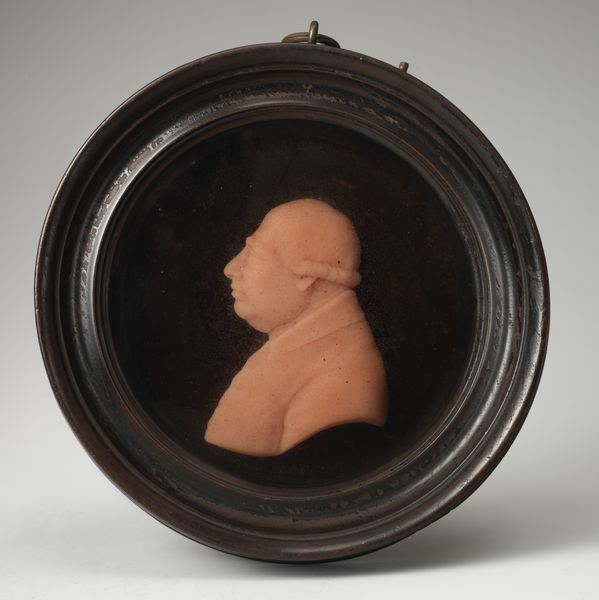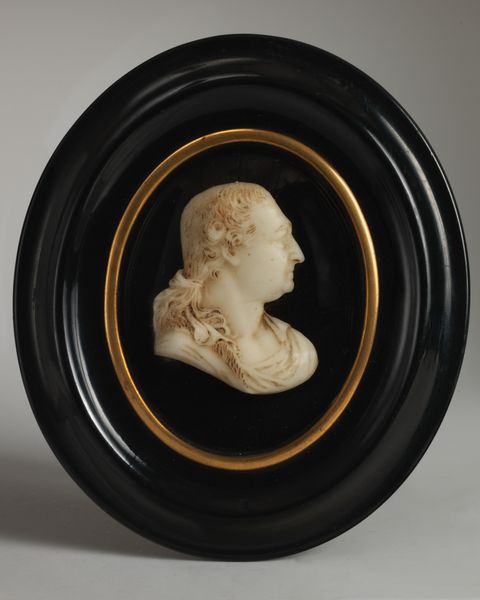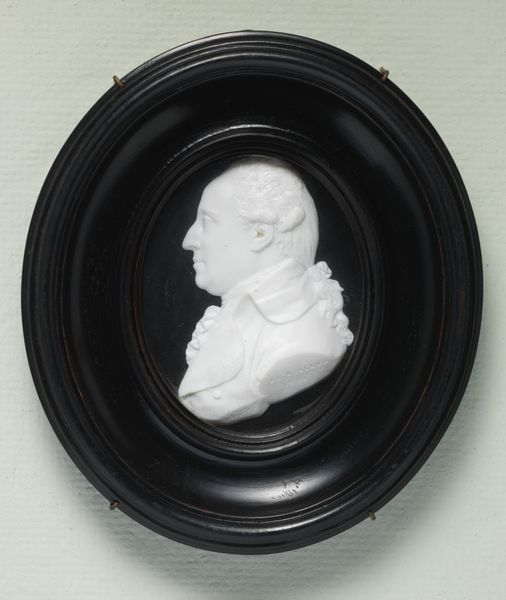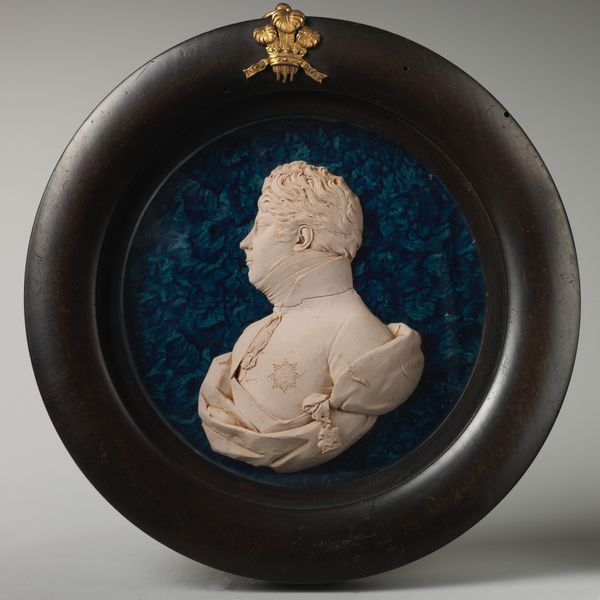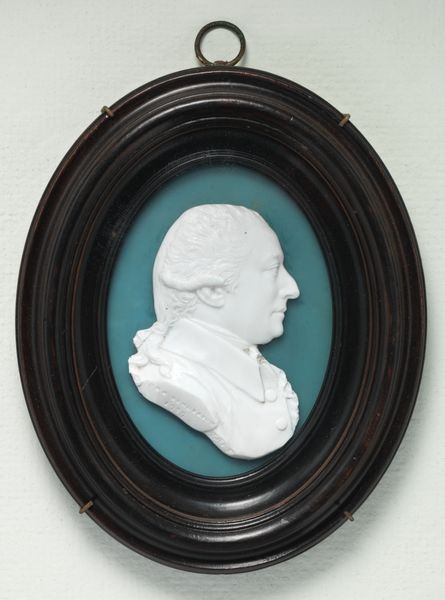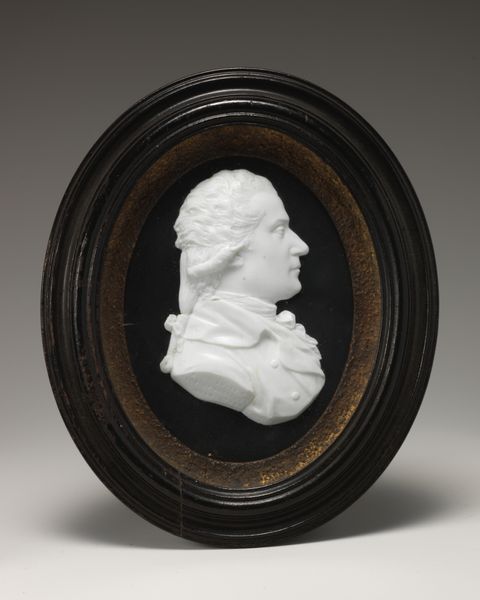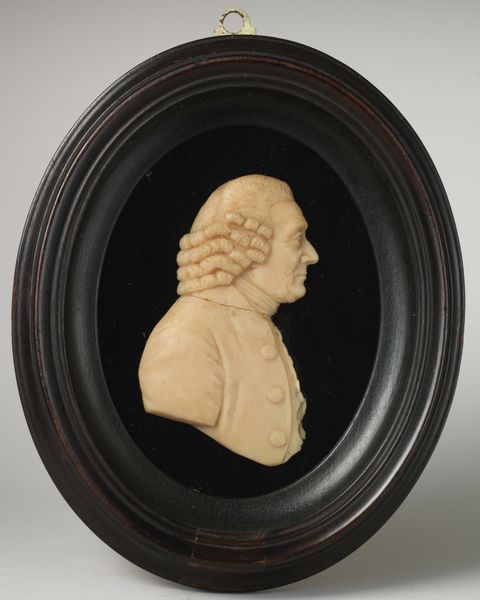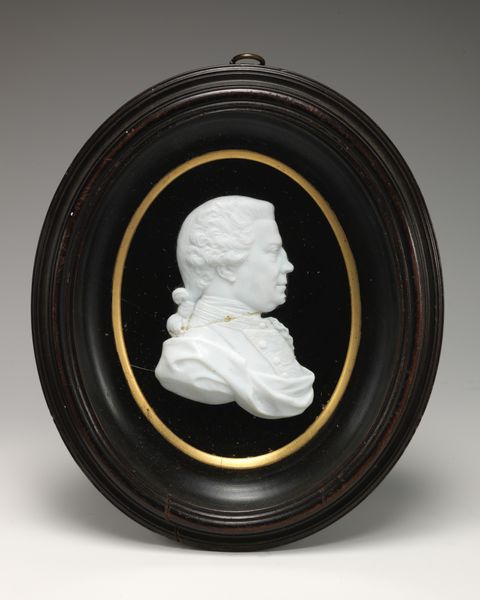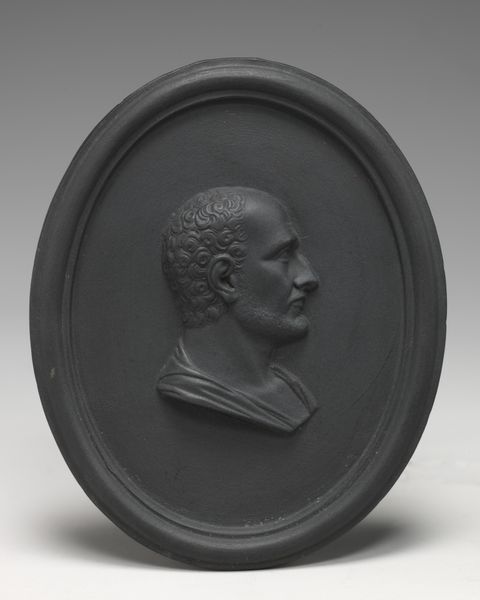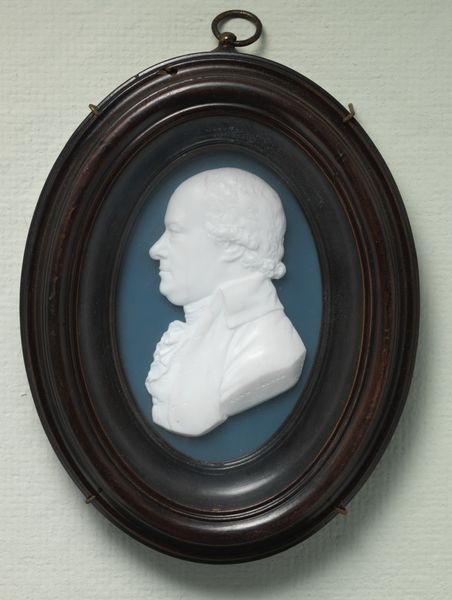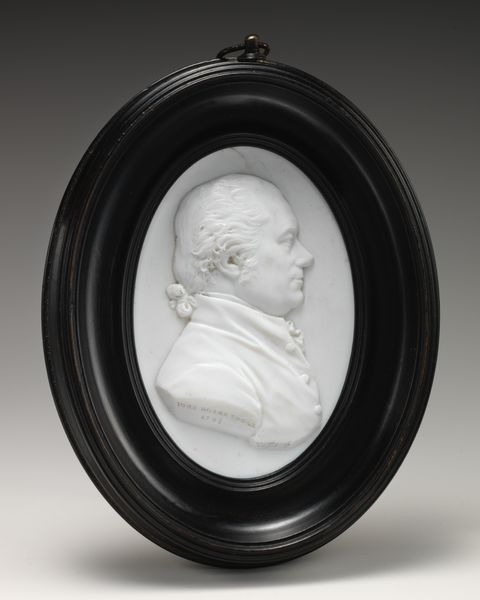
relief, ceramic, sculpture
#
portrait
#
neoclacissism
#
relief
#
ceramic
#
sculpture
#
ceramic
#
history-painting
#
decorative-art
Dimensions: Framed: 7 3/4 × 7 3/8 in. (19.7 × 18.7 cm)
Copyright: Public Domain
Curator: This is a fascinating piece: T. R. Poole's relief portrait of Lord Teignmouth, dating from 1818. The sculpture is ceramic, and it's currently held at the Metropolitan Museum of Art. Editor: My first impression is that it's classically austere. The cool, neutral color palette and the profile view evoke a sense of reserved authority, like a Roman emperor's coin. Curator: Precisely! Neoclassicism was all the rage, channeling the perceived virtues of antiquity. Note how a figure like Lord Teignmouth, who held a prominent position in the British East India Company, used this visual language to project an image of reasoned leadership and imperial strength. Editor: Yes, and the very medium reinforces that impression. Ceramic, in its refined state, suggests permanence and importance. Do you think the choice of a profile view speaks to any specific symbolic intention? Curator: I think it does. Profile portraits historically emphasized lineage and status. Think of ancient coins or royal seals. Placing Teignmouth in profile elevates him to a position of enduring influence, aligning him with a tradition of power. It was vital for those associated with colonial governance to be perceived as respectable within British society. Editor: The circular frame also contributes. It’s reminiscent of a medallion or commemorative plaque, suggesting achievement and lasting remembrance. Was this kind of portraiture a common form of recognition then? Curator: Definitely. It served as a mark of distinction, particularly for those involved in public service. Displaying these portraits was a way to inscribe their legacy into the domestic and public spheres, creating a pantheon of influential figures for posterity. Think how such images were used in popular periodicals of the era to disseminate particular narratives about empire. Editor: So, this is not merely a portrait, but an emblem loaded with the aspirations and self-image of a specific class and era? Curator: Absolutely. By examining these images and how they functioned socially, we gain a more intricate knowledge of the period's political and cultural motivations. Editor: A fitting symbol, then, for a period of empire. Food for thought!
Comments
No comments
Be the first to comment and join the conversation on the ultimate creative platform.
